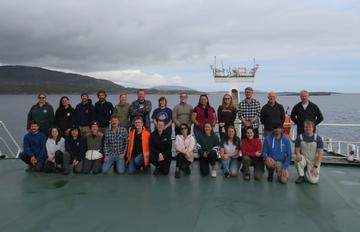Onboard the RRS James Cook: Unlocking the role of marine life in ocean carbon storage
In September 2024, we sailed along with the rest of the JC269 science party on the RRS James Cook. This video highlights the main scientific objectives of the cruise and how we use ships, satellites and autonomy to better understand the fate of carbon in the subpolar North Atlantic.
Click here to see the YouTube Clip!
New Scientist Video Story: Why ocean scientists measure chlorophyll data from satellites
Heather talks to Oxford DPhil student Arianwen Herbert aboard the RRS James Cook about her research on converting satellite maps of phytoplankton chlorophyll into large-scale estimates of marine primary production. This work was conducted in collaboration with colleagues across the UK as part of the IDAPro project.
Click here to see the YouTube clip!
BIO-Carbon Spring Cruise onboard the RRS Discovery
In May and June of 2024, we sailed from Southampton aboard the RRS Discovery to sample the spring bloom in the Iceland Basin. Working together with UK and international collaborators, we will combine ship-based experiments along with observations from earth-orbiting satellites to estimate the amount of carbon fixed by marine phytoplankton within the sunlit layer and how it has changed over time.
Sarah Le Besque (DTP DPhil) will be joining us in another expedition this autumn to find out how many and what type of algal cells live in these subpolar waters as the surface ocean cools and becomes more turbulent. We will also measure the photosynthetic properties of the phytoplankton as they enter a new phase of the annual productivity cycle.

The Bio-Carbon team that sailed on the spring cruise was made up of scientists from universities across the UK as well as two of our leading oceanographic centres (the National Oceanography Centre in Southampton and the Plymouth Marine Laboratory).